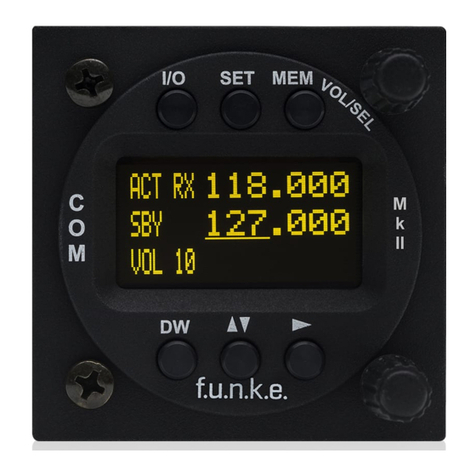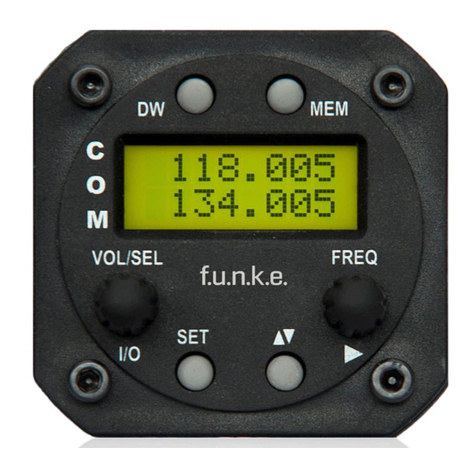2 Dok.-Nr. 01.145.010.71e / Revision 1.00
CONTENT
1GENERAL.......................................................................................................................................... 4
1.1 SYMBOLS ....................................................................................................................................................4
1.2 ABBREVIATIONS ...........................................................................................................................................4
1.3 CUSTOMER SUPPORT ....................................................................................................................................4
1.4 EQUIPMENT CHARACTERISTICS........................................................................................................................5
2OPERATION...................................................................................................................................... 6
2.1 OVERVIEW OF CONTROLS...............................................................................................................................6
2.2 ON/OFF -COMMISSIONING..........................................................................................................................7
2.3 DISPLAY......................................................................................................................................................8
2.4 FREQUENCY SETTING.....................................................................................................................................9
2.4.1 Automatic Selection 8.33 / 25 kHz Channel Bandwidth ........................................................................10
2.4.2 Manual Frequency Input .......................................................................................................................10
2.4.3 Recall a Frequency from the User Memory ...........................................................................................11
2.4.4 Recall a Frequency from the List of the 10 Last Used............................................................................12
2.4.5 Storage of a Frequency into the User Memory .....................................................................................12
2.4.6 ATR Frequency Tool...............................................................................................................................14
2.5 BASIC SETTINGS .........................................................................................................................................15
2.5.1 VOL –Volume........................................................................................................................................15
2.5.2 SQL –Squelch (noise barrier).................................................................................................................15
2.5.3 ST1 –Volume Sidetone Headset 1.........................................................................................................16
2.5.4 ST2 –Volume Sidetone Headset 2.........................................................................................................16
2.5.5 EXT –Volume of the external Audio Input.............................................................................................17
2.5.6 BRT –Brightness....................................................................................................................................17
2.5.7 CON –Contrast......................................................................................................................................18
2.6 TRANSMISSION ..........................................................................................................................................18
2.7 RECEPTION................................................................................................................................................19
2.8 REPLAY FUNKTION....................................................................................................................................19
2.9 DUAL WATCH OPERATION ........................................................................................................................20
2.10 DIGITAL OUTPUTS ......................................................................................................................................21
2.10.1 Reception signaling ...............................................................................................................................21
2.10.2 Runway lightning ..................................................................................................................................21
3CONFIGURATION ........................................................................................................................... 22
3.1 SPACING –CHANNEL SPACING ...................................................................................................................23
3.2 DISPLAY –ENERGY SAVING MODE (AUTOMATIC DISPLAY DARKENING)..............................................................23
3.3 PTT SELECT -BUTTON SELECTION ...............................................................................................................24
3.4 DUOWATCH –DUAL-WATCH VOLUME REDUCTION.......................................................................................26
3.5 EXTAUDIO –BEHAVIOUR OF EXTERNAL AUDIO INPUT.....................................................................................26
3.6 MIC TYPE –SELECTION MICROPHONE TYPE...................................................................................................27
3.7 MIC 1/2–MICROPHONE INPUT SENSITIVITY.................................................................................................28
3.8 SPK MODE –SPEAKER DEACTIVATION..........................................................................................................29
3.9 AUTO ON –POWER-UP BEHAVIOUR............................................................................................................29
3.10 FW /SW –FIRMWARE /SOFTWARE VERSION.................................................................................................30
3.11 MASTER RESET –RESET TO FACTORY SETTINGS................................................................................................31
3.12 OVERVIEW CONFIGURATION MENU (SETUP) ...................................................................................................32






























